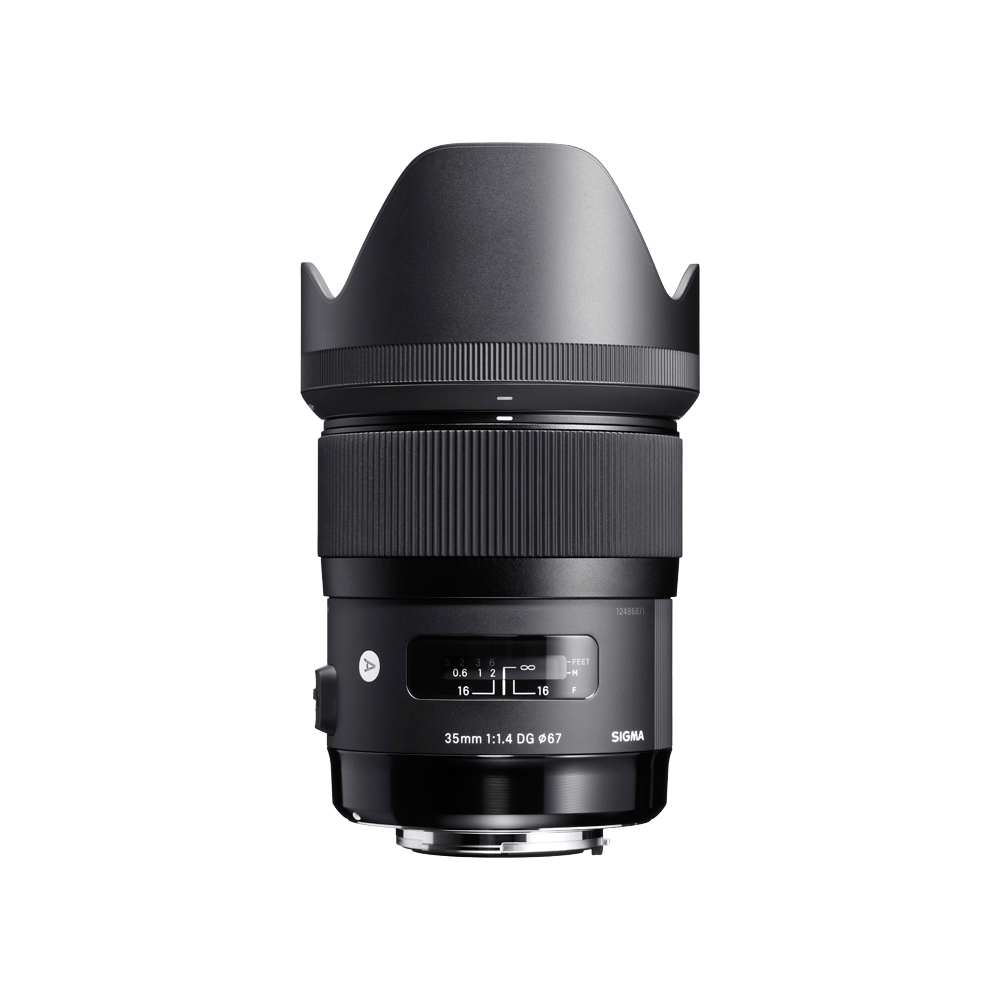
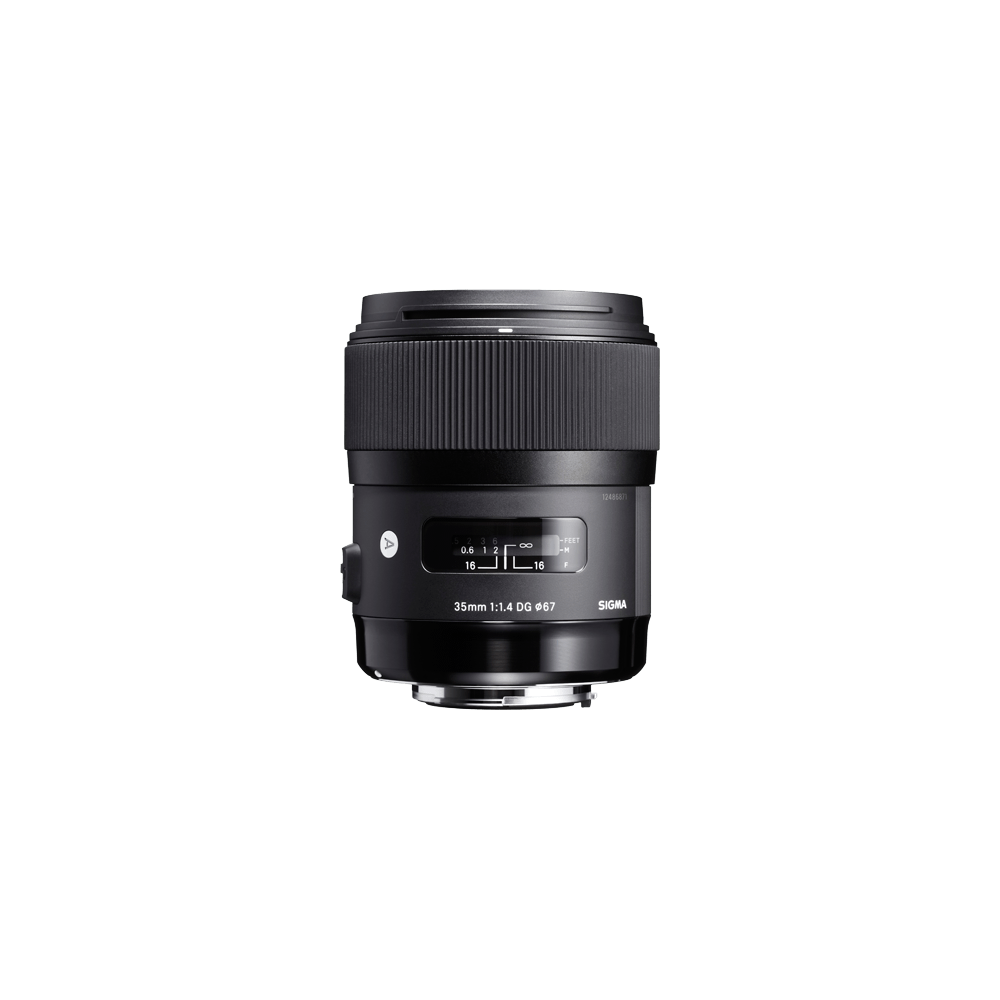
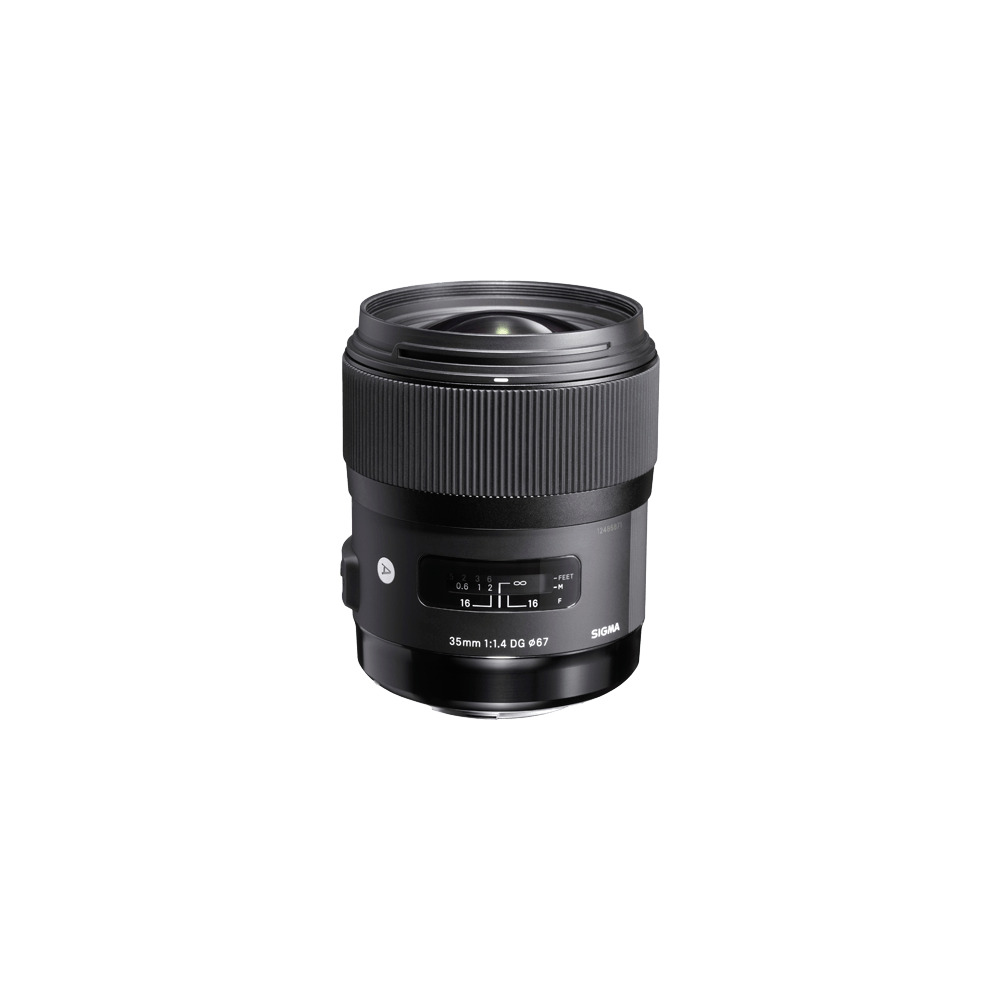



Art
35mm F1.4 DG HSM
Available mounts
- L-Mount
- Sony E-mount
- Sigma SA-mount
- Canon EF mount
- Nikon F mount
- Pentax mount
-
Camera Type
Mirrorless, DSLR
-
Corresponding Mount
L-Mount, Sony E-mount, SIGMA SA-mount, Canon EF mount, Nikon F mount, Pentax mount
-
Sensor Format
Full-frame [DG]
-
Lens Construction
13 elements in 11 groups
-
Angle of View
63.4°
-
Number of Diaphragm Blades
9 (Rounded diaphragm)
-
Minimum Aperture
F16
-
Minimum Focusing Distance
30cm / 11.8in
-
Maximum Magnification Ratio
1:5.2
-
Filter Size
φ67mm
-
Dimensions (Diameter × Length)
SIGMA SA-mount:φ77mm × 94.0mm / φ3.0in. × 3.7in.
L-Mount:φ77mm × 118mm / φ3.0in. × 4.6in.
*The length of a lens is measured from the filter surface to its mount.
-
Weight
SIGMA SA-mount:665g / 23.5oz.
L-Mount:755g / 26.6oz.
-
Edition Number
A012
The three-digit code on the surface of the lens is to indicate the year the lens was first released.
(Since it is different from the year of manufacture, the release year and edition number may not match depending on the mount.) -
Supplied Accessories
・Case
・LENS HOOD LH730-03
・FRONT CAP LCF-67mm III
・REAR CAP LCR II -
Mount / Product Barcode
SIGMA SA-mount:00-85126-34056-8
Nikon F mount:00-85126-34055-1
Canon EF mount:00-85126-34054-4
Pentax mount:00-85126-34061-2
-
Camera Compatibility
LINK
-
L-Mount, SONY A-mount and SONY E-mount has been discontinued in production.
* L-Mount is a registered trademark of Leica Camera AG.
-
A masterpiece large-aperture wide-angle F1.4 lens
A large-aperture lens with minimal axial chromatic aberration and superb peripheral resolution.
Several types of optical aberration can affect the image quality of a lens. Chromatic aberration is among the most important, and minimizing it is essential. There are two types of chromatic aberration: transverse, which can be corrected for with digital processing; and axial, which is difficult to minimize after a shot is taken. In the 35mm F1.4 DG HSM, FLD (“F” Low Dispersion) glass, which is equivalent to fluorite in its characteristics, and SLD (Special Low Dispersion) glass help optimize the power distribution of the lens. This optimization minimizes axial chromatic aberration by causing the different wavelengths of light to strike the same focus position while also minimizing transverse chromatic aberration. In addition, aspheric lenses help minimize astigmatism and field curvature. Thanks to these features, resolution is extremely high from the center to the edges of the photograph.
-
Lens construction
Putting a large-aperture aspheric lens first in the series of lenses makes possible a slim barrel. A single FLD glass lens, which boasts the same performance as a fluorite lens, is combined with four SLD glass lenses to minimize chromatic aberration. And optimized power distribution helps correct various types of optical aberration. These features give this F1.4 large-aperture lens truly optimal image quality.

-
Exclusive low-dispersion glass
The degree to which light is refracted by glass depends on the light’s wavelength. This fact causes different colors of light to focus at slightly different points. The result is chromatic aberration, the color fringing that is particularly noticeable in telephoto lenses. Most chromatic aberration can be removed by combining a high-refractivity convex lens element with a low-refractivity concave element. Yet residual chromatic aberration known as “secondary spectrum” may still remain. To minimize this secondary spectrum, which can be a serious issue with conventional lenses, Sigma lenses feature up to three types of exclusive low-dispersion glass offering superior performance: ELD (Extraordinary Low Dispersion), SLD (Special Low Dispersion) and FLD (“F” Low Dispersion). In particular, FLD glass offers ultra-low dispersion in combination with high transmittance and the anomalous dispersion characteristics of fluorite. Meticulous deployment of these types of exclusive low-dispersion glass and optimization of power distribution gives Sigma lenses superlative image rendition undiminished by residual chromatic aberration.

-
High resolution with beautiful bokeh effects
Minimal distortion combined with beautiful bokeh effects at large-aperture settings.
The aspheric lens at the front of the lens series helps minimize both distortion and vignetting. The rounded diaphragm produces an attractive round bokeh effect at large-aperture settings. Optimized power distribution minimizes sagittal coma flare. Coma of point light sources near the edge of the image and axial chromatic aberration are both minimized, making the lens an excellent choice for photographing nighttime landscapes and heavenly bodies.

-
Rounded diaphragm
When photographing with point light sources such as electric lights or reflections on a body of water in the background, the rounded 9-blade diaphragm helps produce an attractive bokeh effect—even at large-aperture settings.
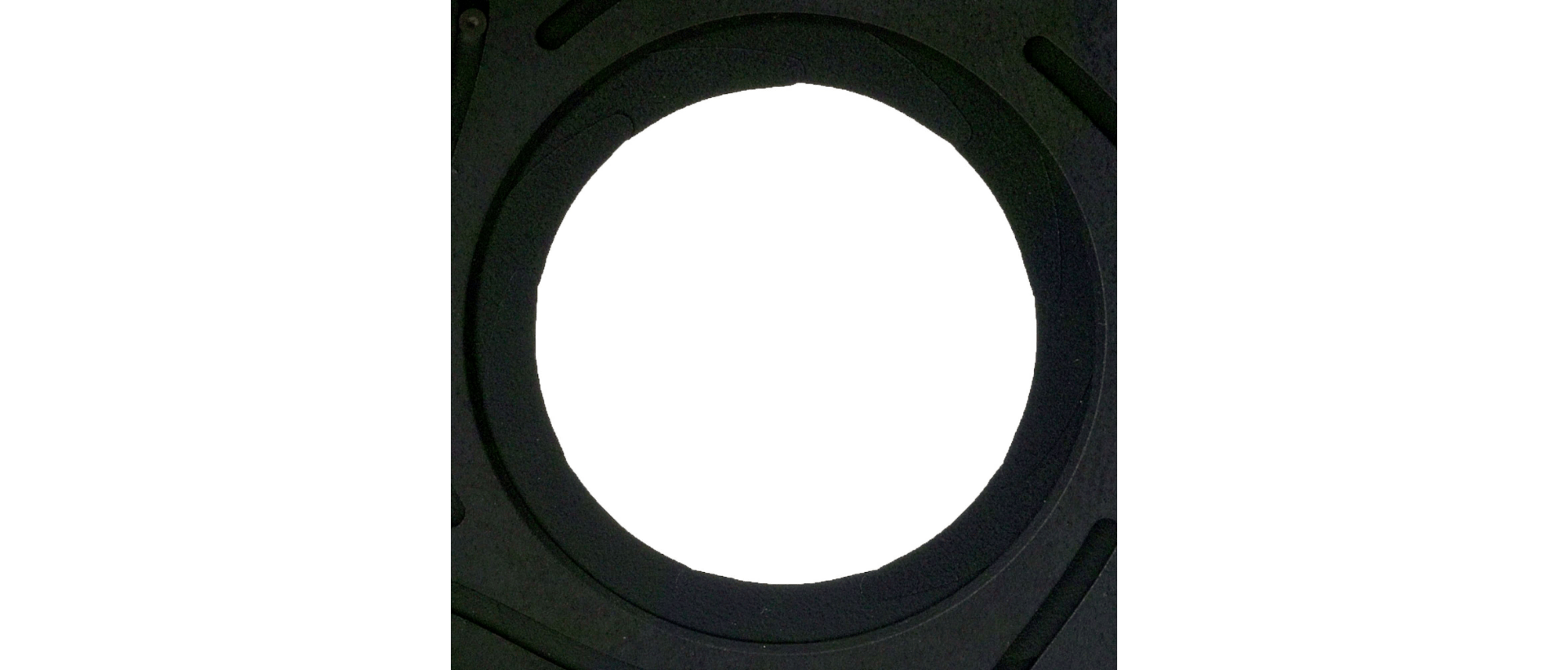
-
The finest in materials, usability and functionality.
A refined, integrated design made with the photographer in mind.
All lenses in Sigma’s new Art line come with a hood with a high-quality rubberized connector and feature a newly designed lens cap and AF/MF switch, and are designed for intuitive use and superior functionality. Inside, HSM (hypersonic motor) delivers high AF speed and extremely quiet performance. An enhanced algorithm offers even smoother automatic focusing. Full-time manual focus override is another key feature that leaves the artistic touches in the photographer’s hands. The brass mount combines high precision with rugged construction. Its treated surfaces and enhanced strength contribute to the exceptional durability of the lens. In both the external and internal parts, the optimized use of TSC(Thermally Stable Composite), an excellent match for metal parts, further contributes to the high-precision construction of the lens.

-
HSM (hypersonic motor)
HSM (hypersonic motor) delivers high AF speed and extremely quiet performance.
-
Floating system
This system adjusts the distance between lens groups during focusing, thereby reducing the amount of lens movement required. The result is less aberration at different shooting distances. Benefits are particularly great in macro lenses because they cover a wide range of shooting distances, and in wide-angle lenses, which employ asymmetric configurations of lens elements.

-
TSC (Thermally Stable Composite)
A first for the industry, the barrel of the lens features a new TSC (Thermally Stable Composite) that offers minimal thermal shrinkage combined with exceptional hardness. It also offers 25% greater elasticity than polycarbonate. Since its thermal shrinkage is low, TSC matches well with metal parts, further contributing to the high-precision construction of the lens. TSC also makes possible slimmer forms for parts like zoom rings and scaling rings.
-
Flare and ghosting reduction
From an early stage in the lens design process, flare and ghosting have been measured to establish an optical design resistant to strong incident light sources such as backlighting. Sigma’s Super Multi-Layer Coating reduces flare and ghosting to help photographers produce sharp and high contrast images even in backlit conditions. The included lens hood can be attached to block out extraneous light, which can have a negative effect on rendering performance.

-
High-precision, rugged brass bayonet mount
The brass mount combines high precision with rugged construction. Its treated surfaces and enhanced strength contribute to the exceptional durability of the lens.
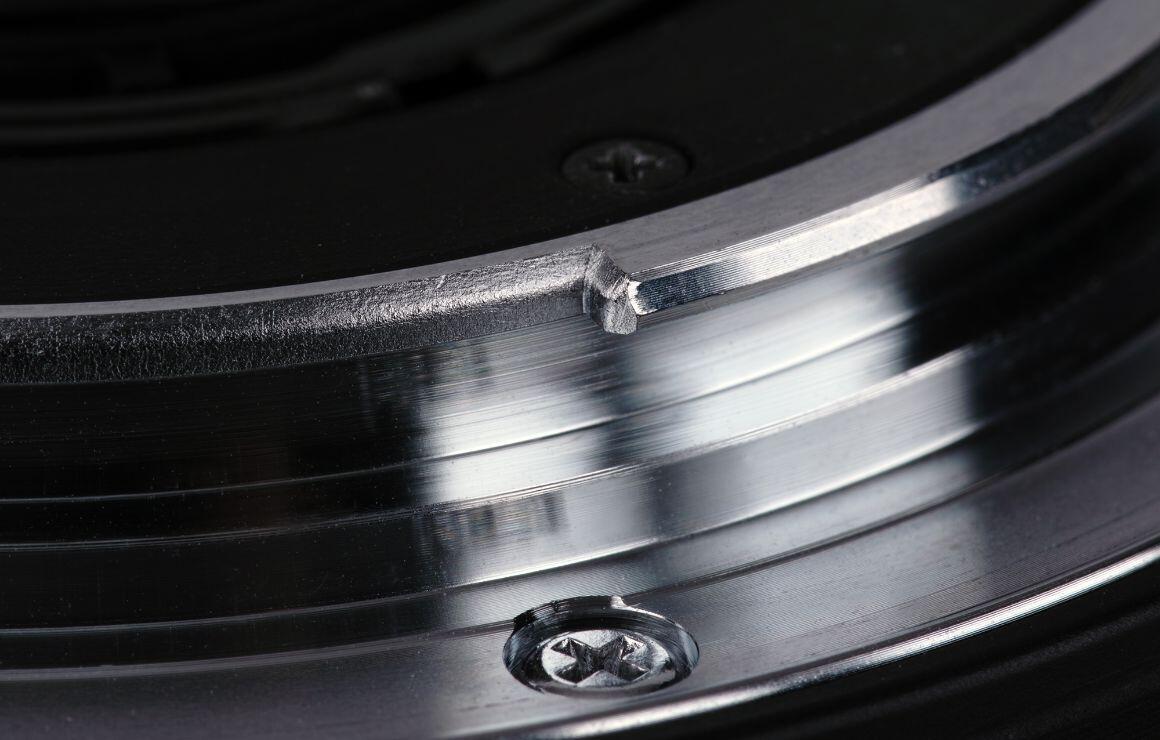
Lens construction
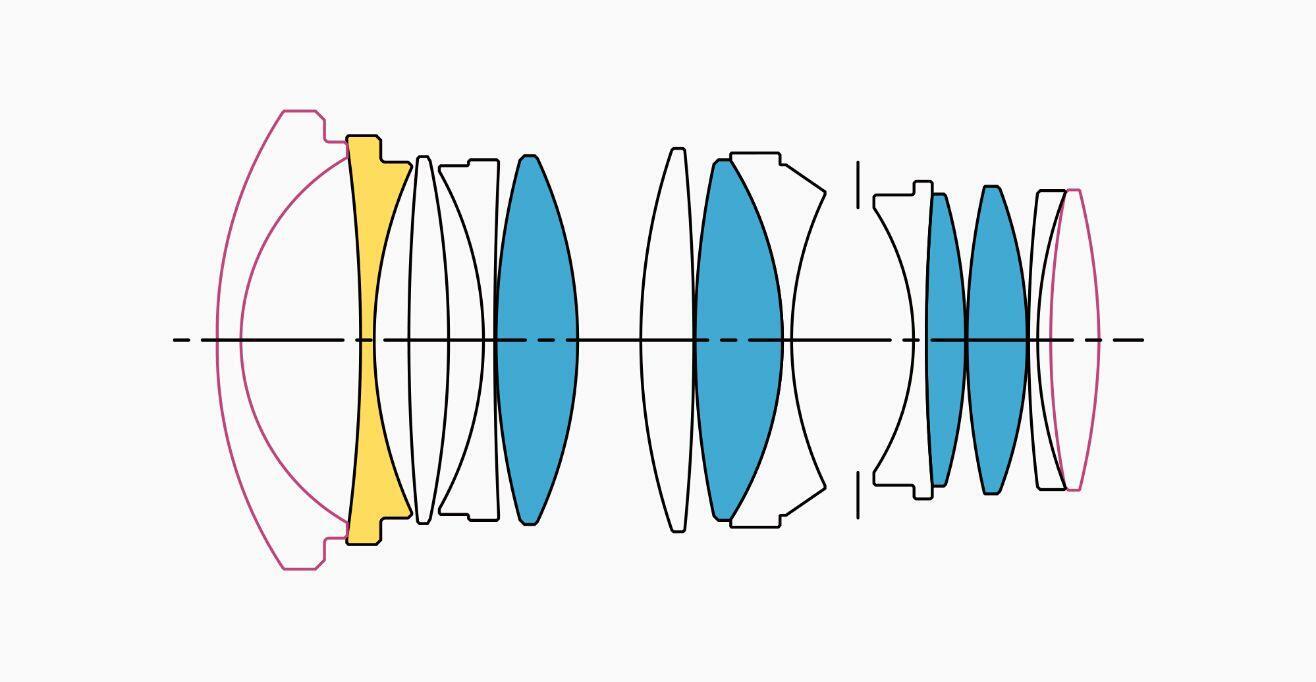
FLD glass
SLD glass
Aspherical lens
MTF Chart
The MTF (Modulation Transfer Function) is one of the measurements for evaluating a lens’ performance, and it shows how faithfully the contrast of the subject can be reproduced on the image plane. The horizontal axis shows the image height (distance from the center of the image in mm) and the vertical axis shows the contrast value (maximum value is 1).
The closer the 10 line pairs/mm curve is to 1, the higher the contrast and clarity of the lens is, and similarly, the closer the 30 line pairs/mm curve is to 1, the better the resolution and sharpness of the lens is.
*The MTF chart depicts the result at the wide-open aperture.
*For mirrorless lenses that support distortion correction, the horizontal axis shows the image height equivalent to when an L-Mount lens is attached to a Sigma L-Mount camera with distortion correction applied. (The effect of distortion correction may differ depending on the mount and camera used.)
*The spatial frequency indicates the variation on the image plane before distortion correction is performed.
-
Spatial frequency
S:Sagittal Line
M:Meridional Line
-
10lp/mm
-
30lp/mm
Diffraction MTF
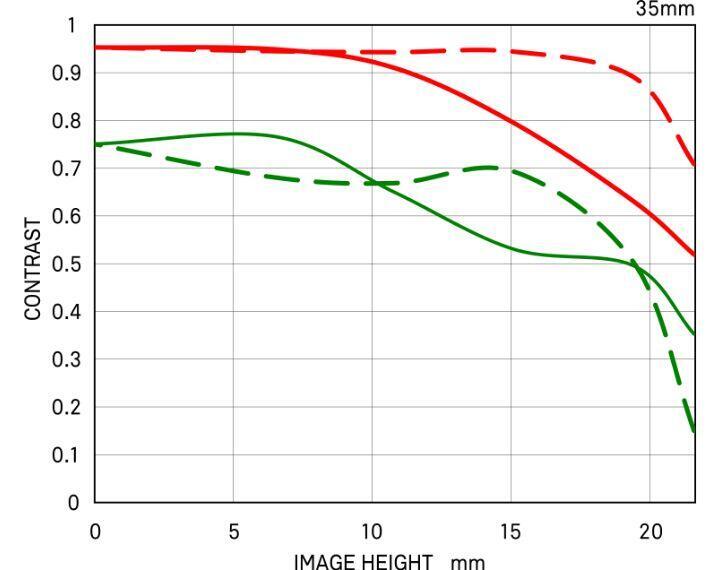
Distortion
effective distortion
When you take a picture of a lattice pattern, it will appear as the blue dotted line shows. The red line illustrates how the lattice pattern will appear in the actual picture when any lens distortion is taken into account.
relative distortion
In this chart, the horizontal axis shows the ideal image height (the distance from the center to the edge of the image [mm]). The vertical axis shows the extent of distortion. The extent of distortion is represented by how much Y, which is the actual image height, grows (or shrinks) against Y0 which is the ideal image height.
When you take the picture of a square object, if the distortion amount shows a minus value, the image will be seen as expanded (Barrel distortion). If the distortion amount is a plus value, it will be seen as a recessed (Pincushion distortion). When the distortion value is close to 0, the appearance of distortion is very minimal.

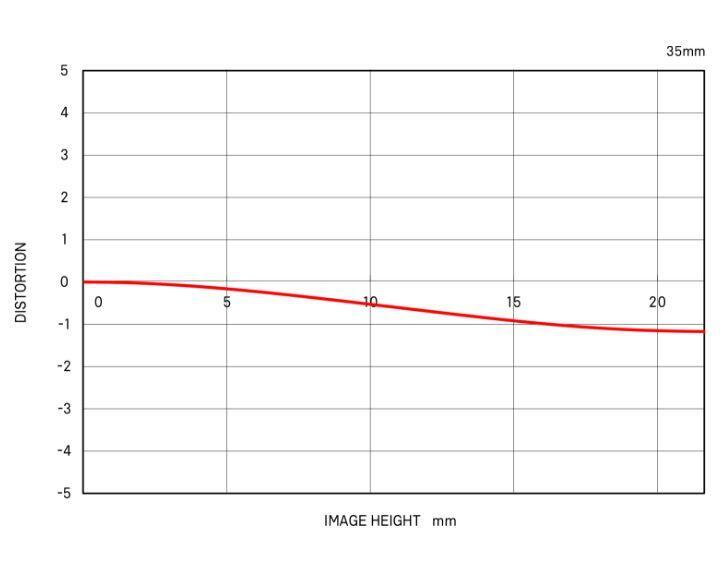
Vignetting
The horizontal axis shows the image height (the distance from the center to the edge of the image [mm]).The vertical axis shows the amount of light in the image (based on the amount of light in the image center being 100%). If the peripheral amount of light is lower than the center, the four corners of image will be darker (vignetting).
-
F1.4
-
F2.8
-
F5.6
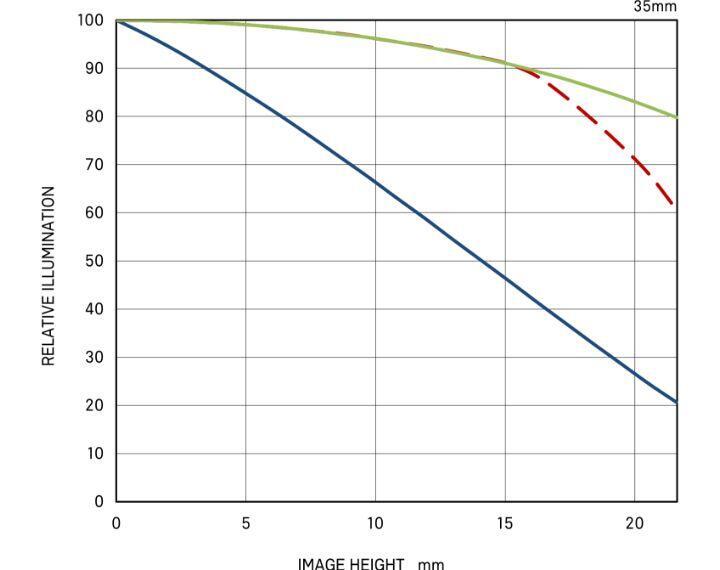

| Camera | SIGMA SD1 |
|---|---|
| Shutter Speed | 1/60s |
| Lens F Number | F11 |
| ISO | 100 |
| Focal Length | 35mm |
|
Focal length
(35mm equivalent) |
52mm |
| Photographer | Kazuyuki Hagiwara |

| Camera | SIGMA SD1 |
|---|---|
| Shutter Speed | 1/320s |
| Lens F Number | F5.6 |
| ISO | 100 |
| Focal Length | 35mm |
|
Focal length
(35mm equivalent) |
52mm |
| Photographer | Kazuyuki Hagiwara |

| Camera | SIGMA SD1 |
|---|---|
| Shutter Speed | 1/30s |
| Lens F Number | F2.5 |
| ISO | 100 |
| Focal Length | 35mm |
|
Focal length
(35mm equivalent) |
52mm |
| Photographer | Kazuyuki Hagiwara |

| Camera | SIGMA SD1 |
|---|---|
| Shutter Speed | 5s |
| Lens F Number | F8 |
| ISO | 100 |
| Focal Length | 35mm |
|
Focal length
(35mm equivalent) |
52mm |
| Photographer | Kimio Yajima |
A large-aperture wide-angle F1.4 lens
that delivers groundbreaking resolution and image quality.
A true flagship of artistic expression.
Hold it in your hands and see what it can do!
One of Sigma's finest creations yet,
this lens sets a new benchmark for performance,
offering quality that exceeds expectations in every way.
A large-aperture wide-angle F1.4 lens with truly impressive image quality.
A true flagship of artistic expression.
Sigma has always leveraged the most advanced optical technologies to offer photographers the highest level of lens performance. Now, Sigma is proud to offer the first lens in an all-new product line: the 35mm F1.4 DG HSM. This wide-angle F1.4 lens delivers the highest level of brightness and beautiful bokeh effects. It offers the unique characteristics that only a large-aperture F1.4 lens can offer: shallow depth of field along with superior low-light and hand-held performance.